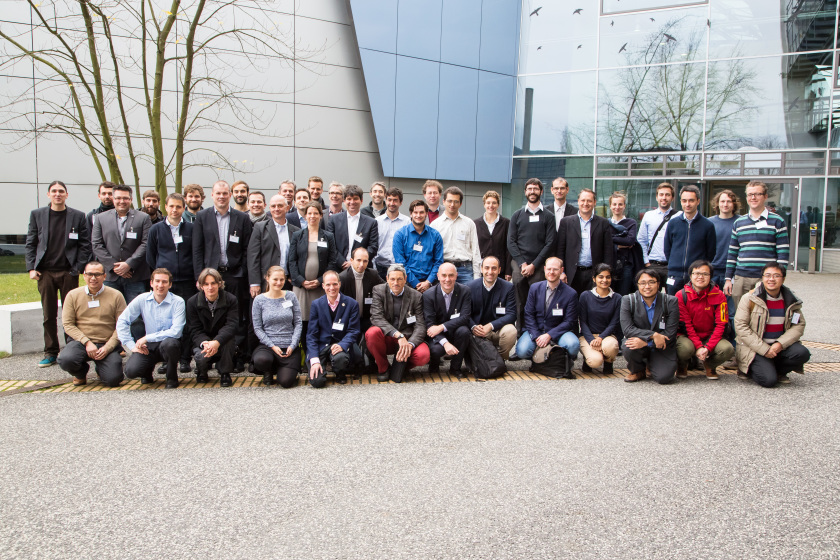European Workshop on Nanophotonics for Solar Energy

Participants of the European Workshop on Nanophotonics for Solar Energy. © HZB
On 25 and 26 November 2015, about 40 researchers from seven European countries visited Helmholtz-Zentrum Berlin to attend the “European Workshop on Nanophotonics for Solar Energy”.
On 25 and 26 November 2015, about 40 researchers from seven European countries visited Helmholtz-Zentrum Berlin to attend the “European Workshop on Nanophotonics for Solar Energy”.
During this workshop, current trends and developments in this field were discussed. Further, future opportunities and possibilities for collaboration were explored during discussions, which were initiated with a talk on funding within the European Commission Horizon 2020 program by Dr. David Kolman from the Brussels Office of the Helmholtz Association. The highlight of the workshop was the Distinguished Lecture by Prof. Thomas F. Krauss from the University of York (UK), in which he shared his vision on the future of Photovoltaics and informed us about the latest research results from his group.
This workshop was initiated and organized by Christiane Becker, Sven Burger and Klaus Jäger within the Berlin Joint Lab for Optical Simulations for Energy (BerOSE), which is a collaboration between Helmholtz-Zentrum Berlin, Zuse Institute Berlin and the Free University Berlin.
Klaus Jäger
https://www.helmholtz-berlin.de/pubbin/news_seite?nid=14387;sprache=en
- Copy link
-
Successful master's degree in IR thermography on solar facades
We are delighted to congratulate our student employee Luca Raschke on successfully completing her Master's degree in Renewable Energies at the Hochschule für Technik und Wirtschaft Berlin - and with distinction!
-
Perovskite solar cells from Germany are competing with China's PV technology - HZB 2025 Technology Transfer Award
Photovoltaics is the leading technology in the transition to clean energy. However, traditional silicon-based solar technology has reached its efficiency limit. Therefore, a HZB-team has developed a perovskite-based multi-junction cell architecture. For this, Kevin J. Prince and Siddhartha Garud received the Helmholtz-Zentrum Berlin's (HZB) Technology Transfer Prize of 5,000 euros.
-
Sasol and HZB deepen collaboration with strategic focus on digitalisation
Sasol Research & Technology and Helmholtz Zentrum Berlin (HZB) are expanding their partnership into the realm of digitalisation, building on their joint efforts in the CARE-O-SENE project and an Industrial Fellowship launched earlier this year. This new initiative marks a significant step forward in leveraging digital technologies to accelerate catalyst innovation and deepen scientific collaboration.
